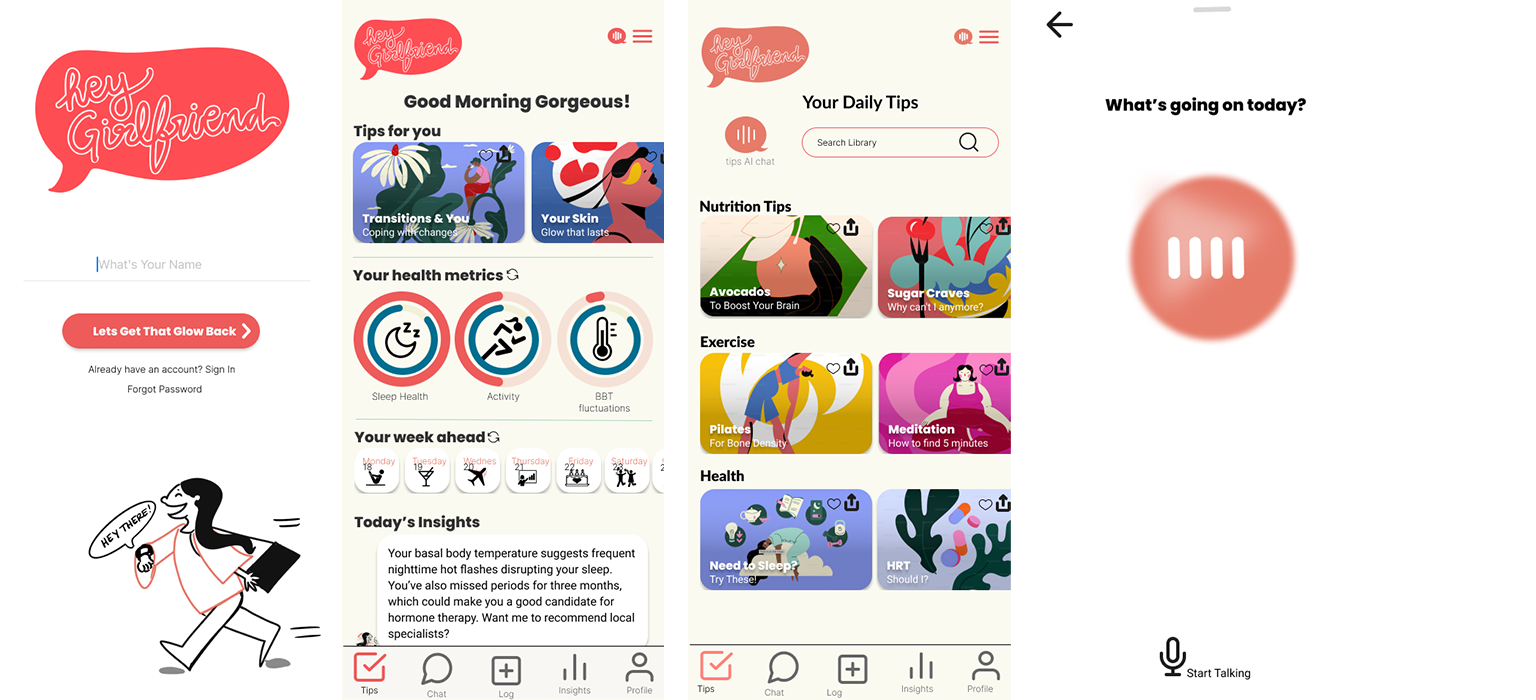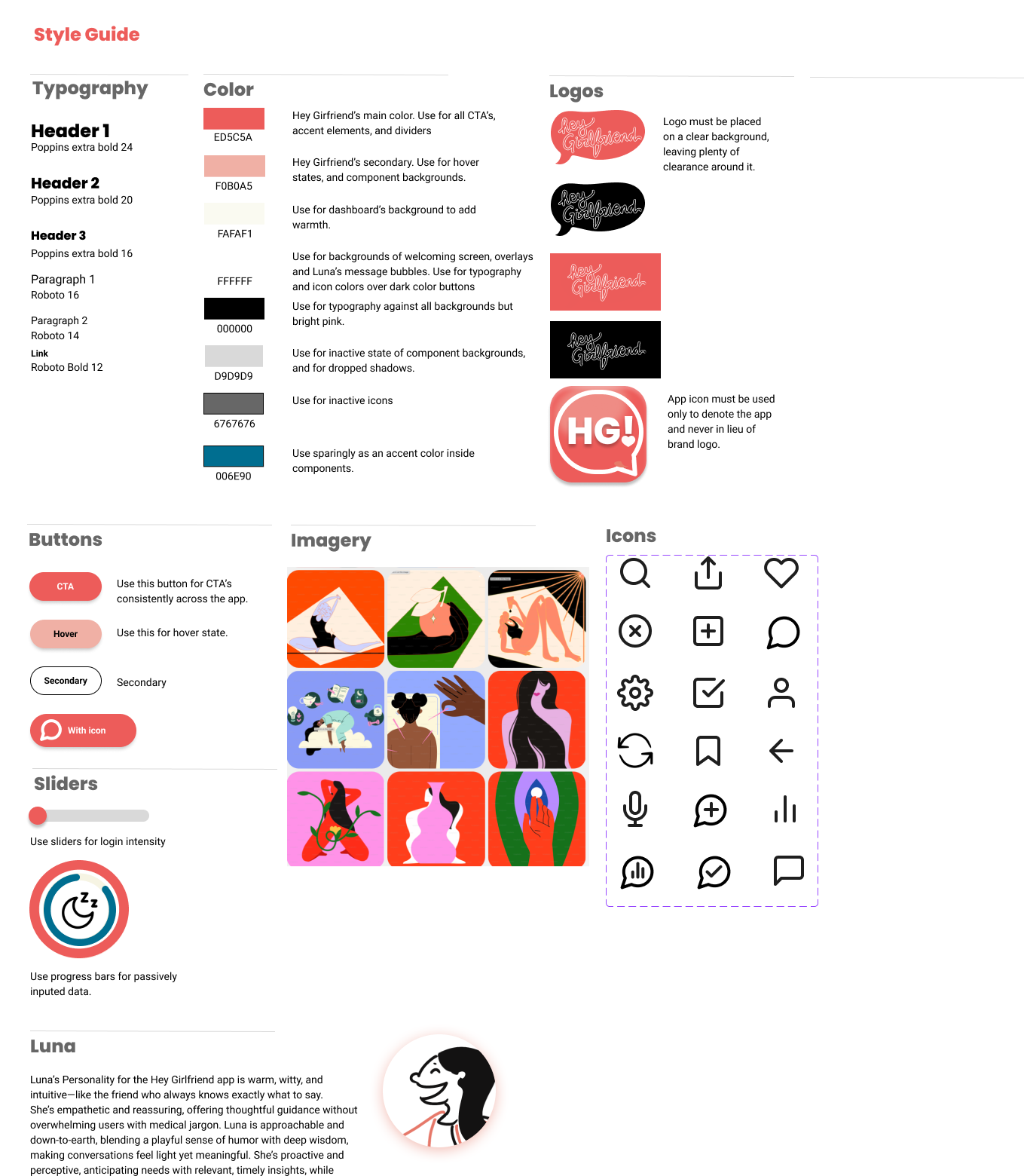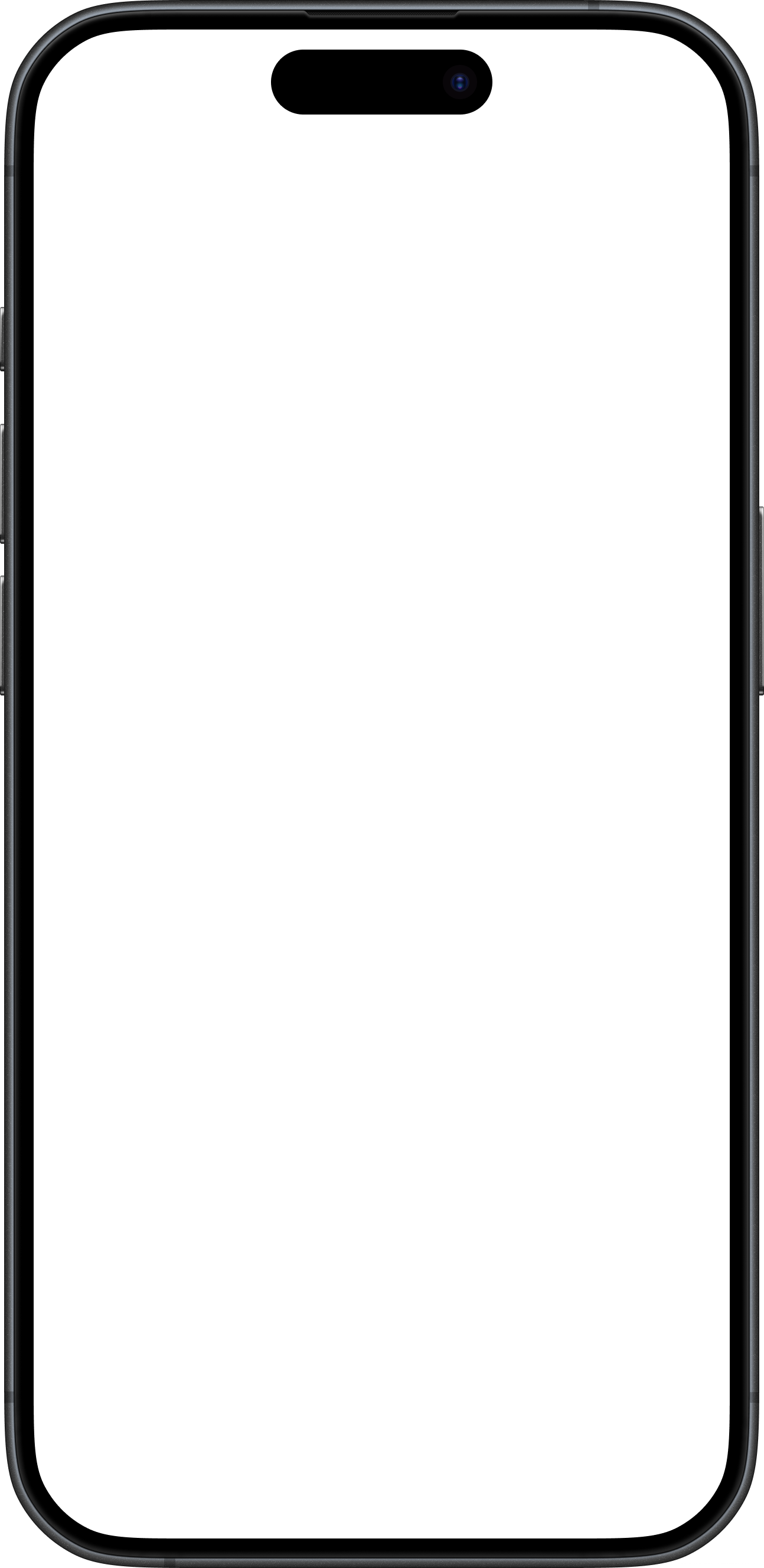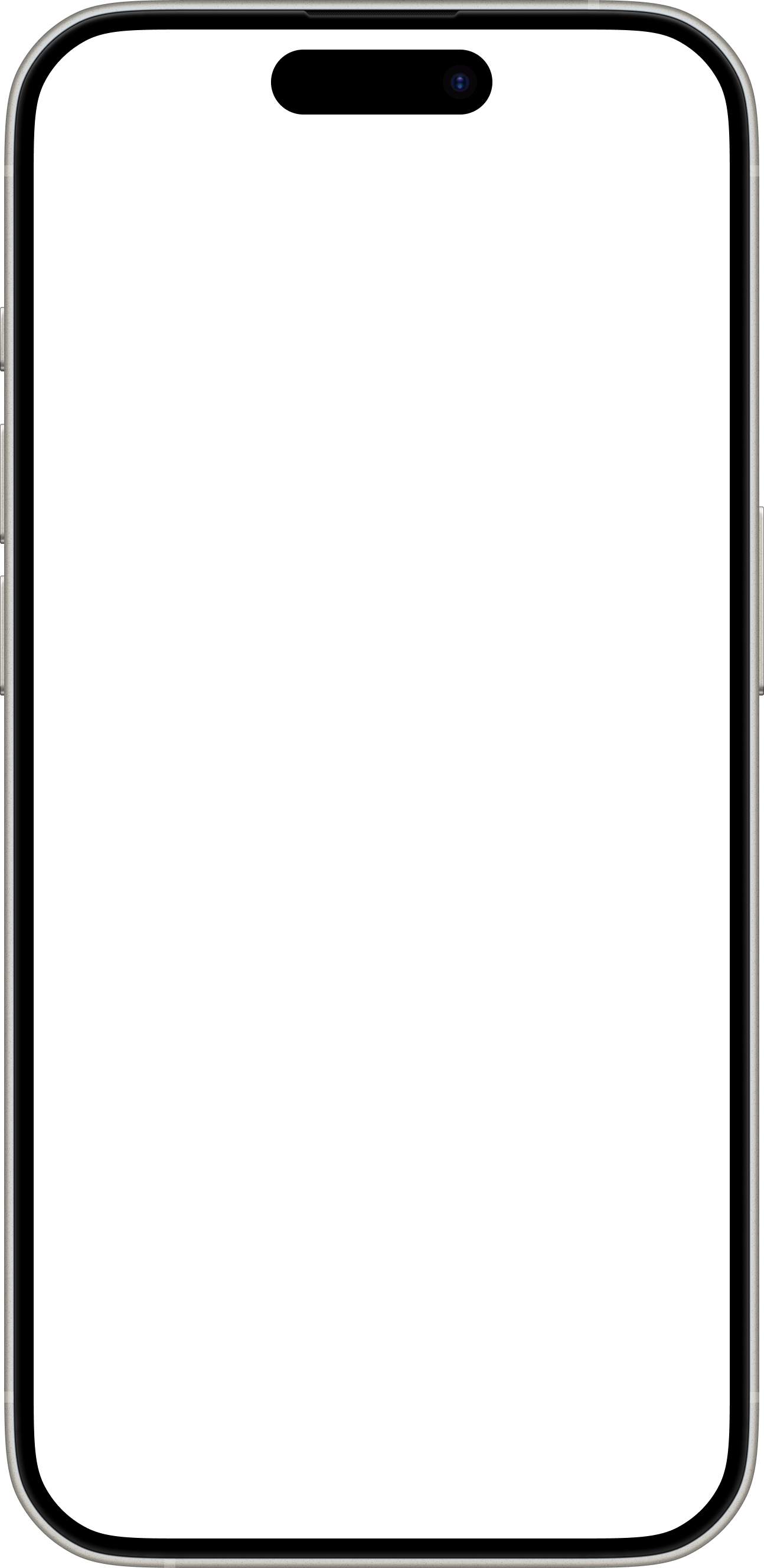
Your Perimenopause Guide
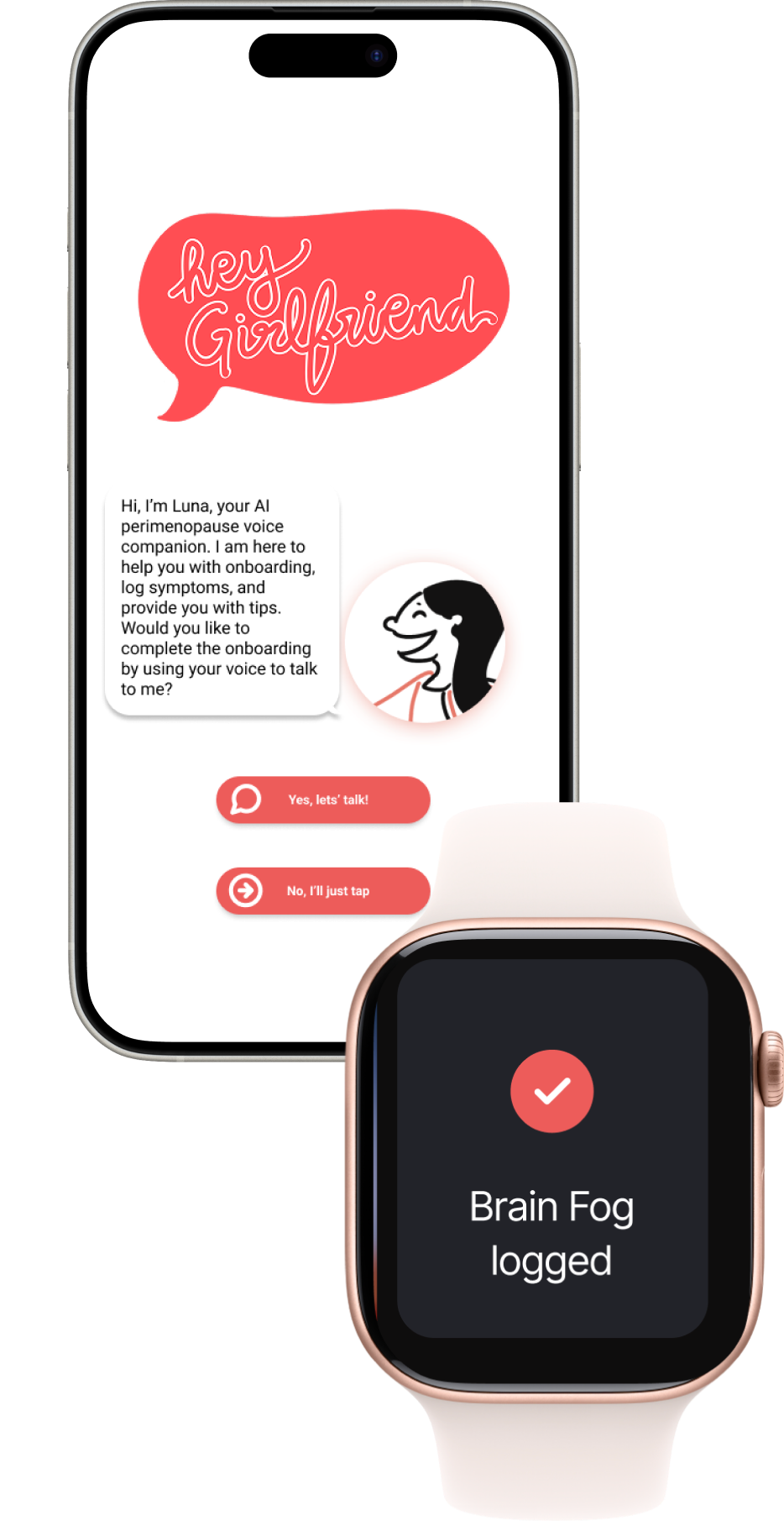
Hey Girlfriend is a wellness app for busy women dealing with perimenopause. It leverages LLM technology and passive-data tracking from wearables, to offer symptom relief and personalized coaching.
Through hands-free conversation, users get actionable advice from their AI companion when they need it most.
Role: User Research | Product Design | UI | Product Concept

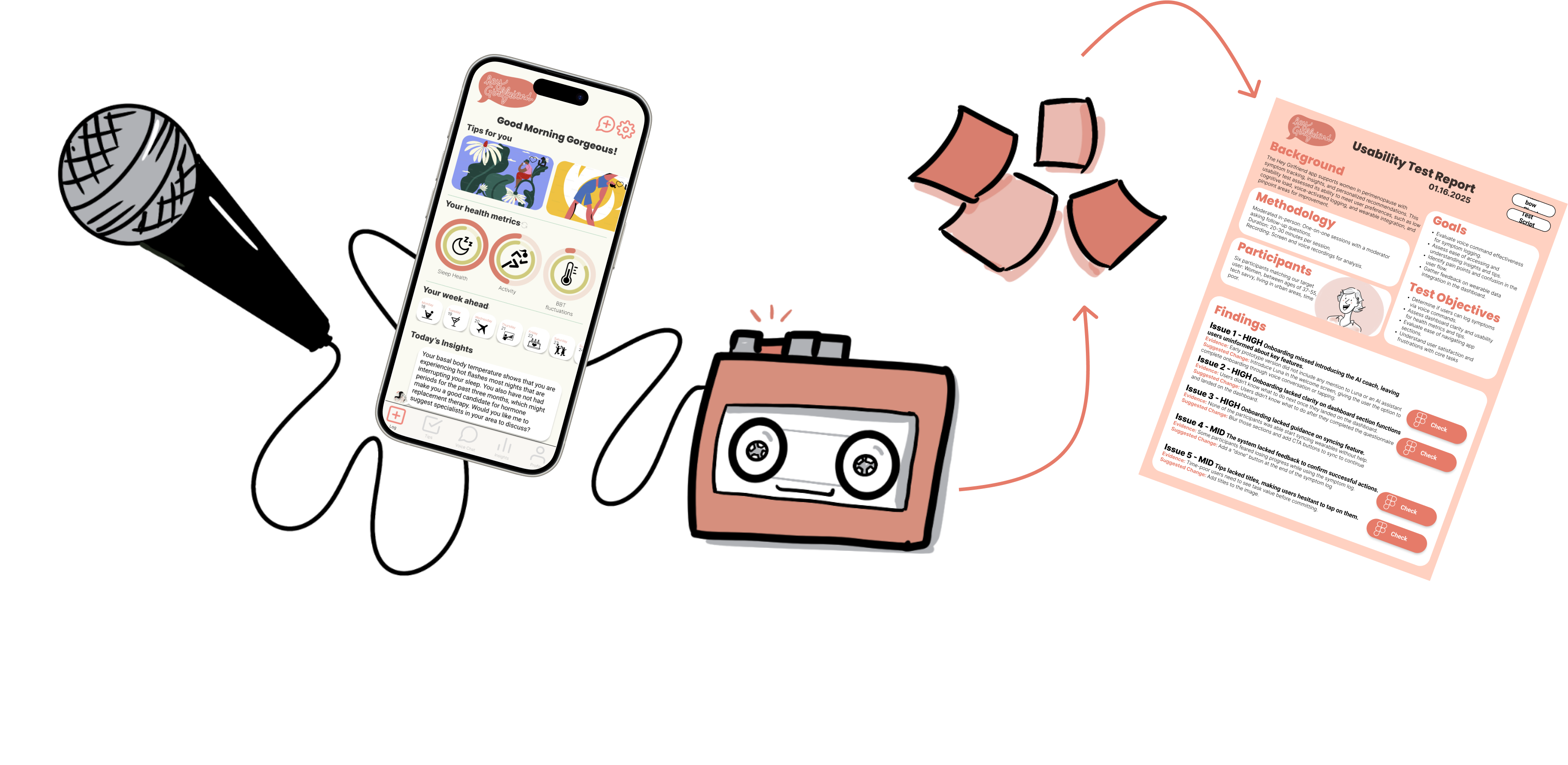
User Testing
Information
Architecture
Wireframing

Splash
Screen
Sign Up
Questionnaire
Link Accounts
Sync Data
Home Screen
AI Chat
Quick Tips
Quick Log
Week Ahead
Insights
History
Export Data
Tips
Search
By Topic
Logs
Symptoms
Medicatio n
Settings
Account
Notifications
Login
Onboarding
Following my research, this site map seeks to:
- Place emphasis on symptom relief instead of tracking.
- Leverage voice AI to keep UI cognitive load to a minimum, while providing rich functionality.
- Integrate well with wearables and calendar.
- Draw passive data.
I conducted a hybrid card sorting study to validate and assess the site map.
Now it was time to translate all these insights into ideas for potential solutions. I created wireframes from Lo-fi to Mid and high-fidelity.
User Personas

Primary Insights
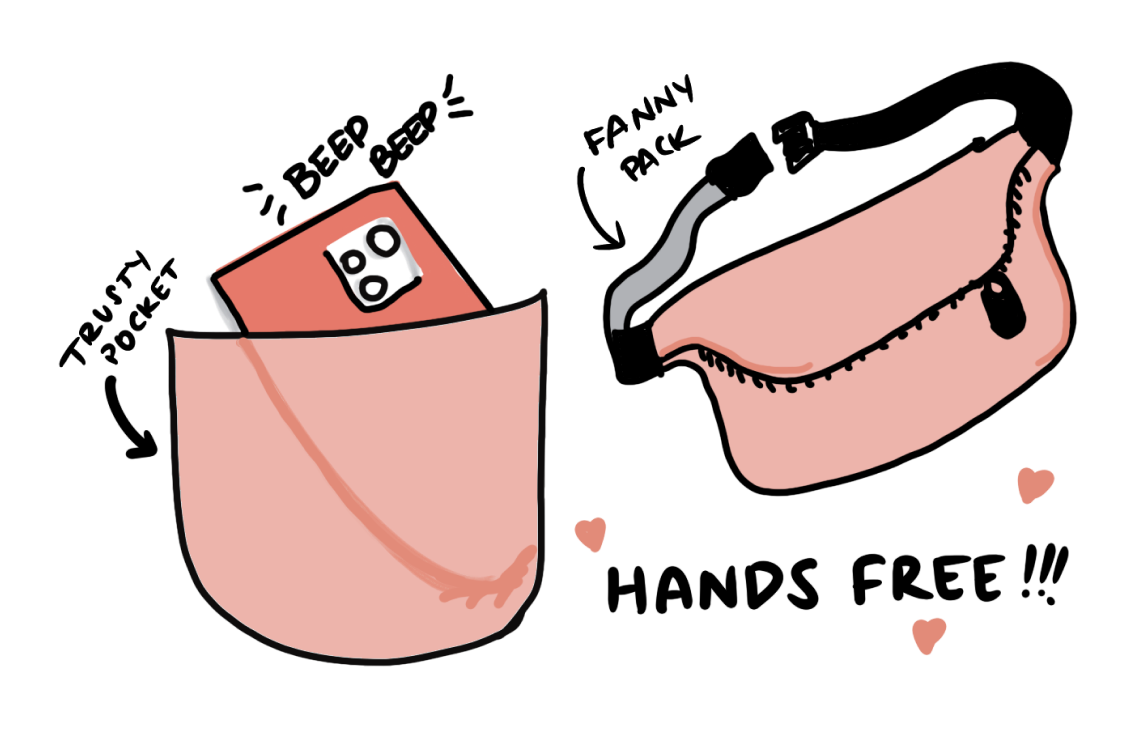
Wearables are Beloved
These users literally have their hands full. For them smart phones are a problem to be solved through pockets and fanny packs. Wearables are non invasive and useful.
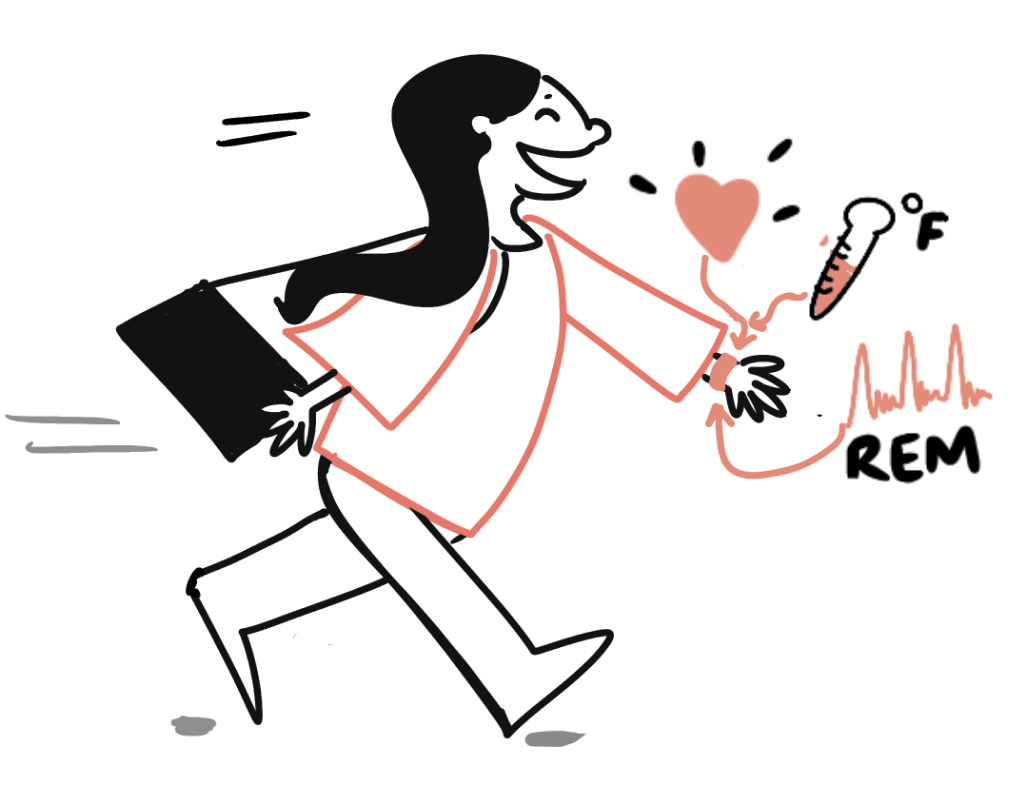
Passive Data Input is a Must
Real time data collection without notifications or typing--(both abhorred by these users), of all sorts of biometrics, which matched the complexity of perimenopause.

Data is useful as Advice
Users need data-driven insights that simplify the complexity of symptoms into actionable advice.
Understanding The User
I conducted Interviews and anonymous surveys to gather insights from potential users.
My goal was to understand how perimenopause affects women’s daily lives and what support they actually need; Identify gaps in existing tools and opportunities for better, more personalized solutions, and to design for real-world constraints: time, tech, and communication styles.
I used the data to create personas, user journeys, user flows, and the app architecture.
User Stories
But would this work for users? Let’s find out!
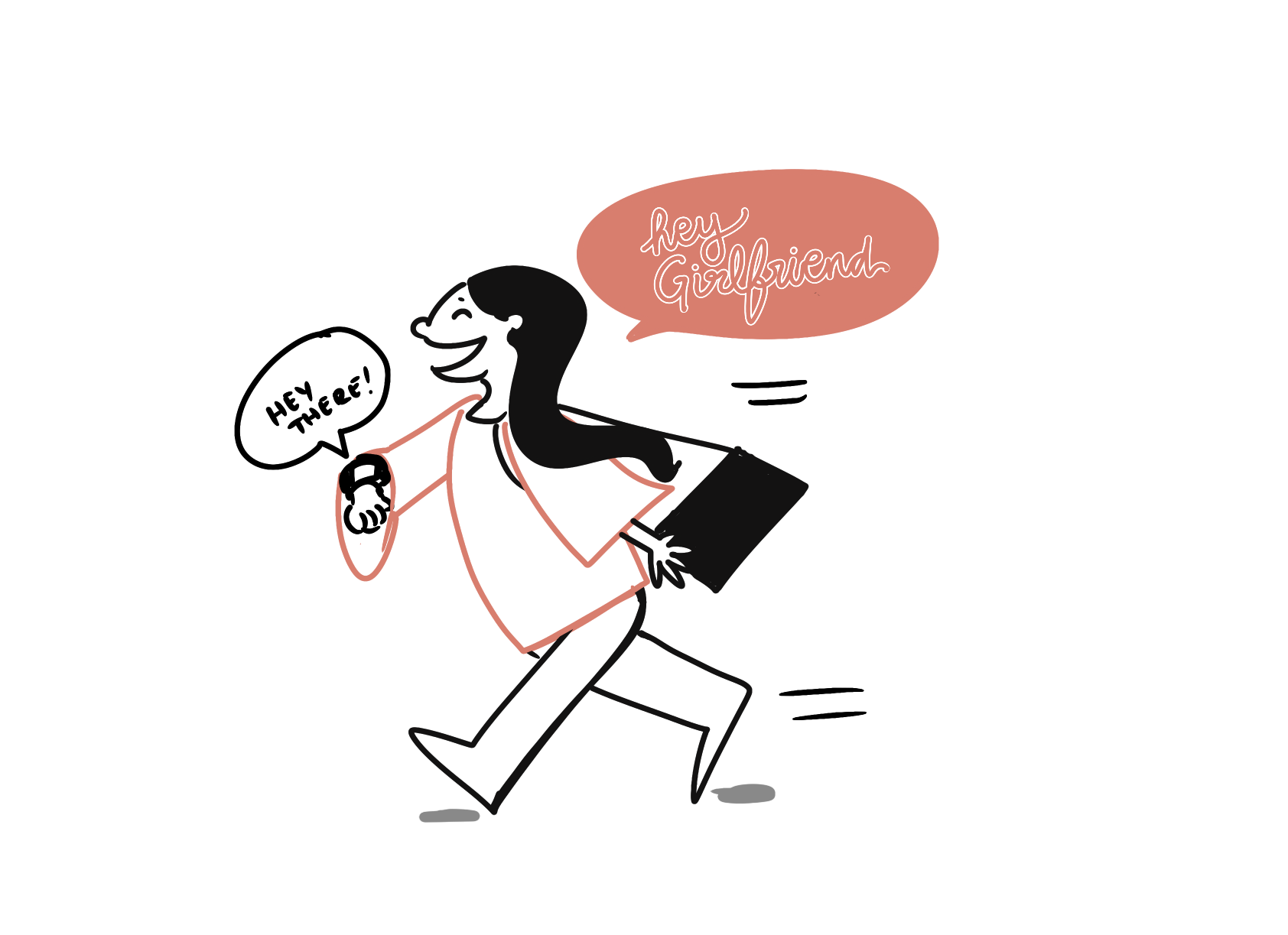
...Which led me to adopt a design approach that would:
- Leverage generative voice AI ,
- Leverage integration with wearable devices
- Focus on symptom relief.
User Stories
After my analysis I learned that the current apps, while beautifully designed, could do better at meeting their users where they are at. The apps tend to be:
Insights from Competitive Analysis

Time Consuming
Current apps require extensive and consistent user input to provide relevant insights. For busy working moms, this can be a significant burden as they are already stretched thin.
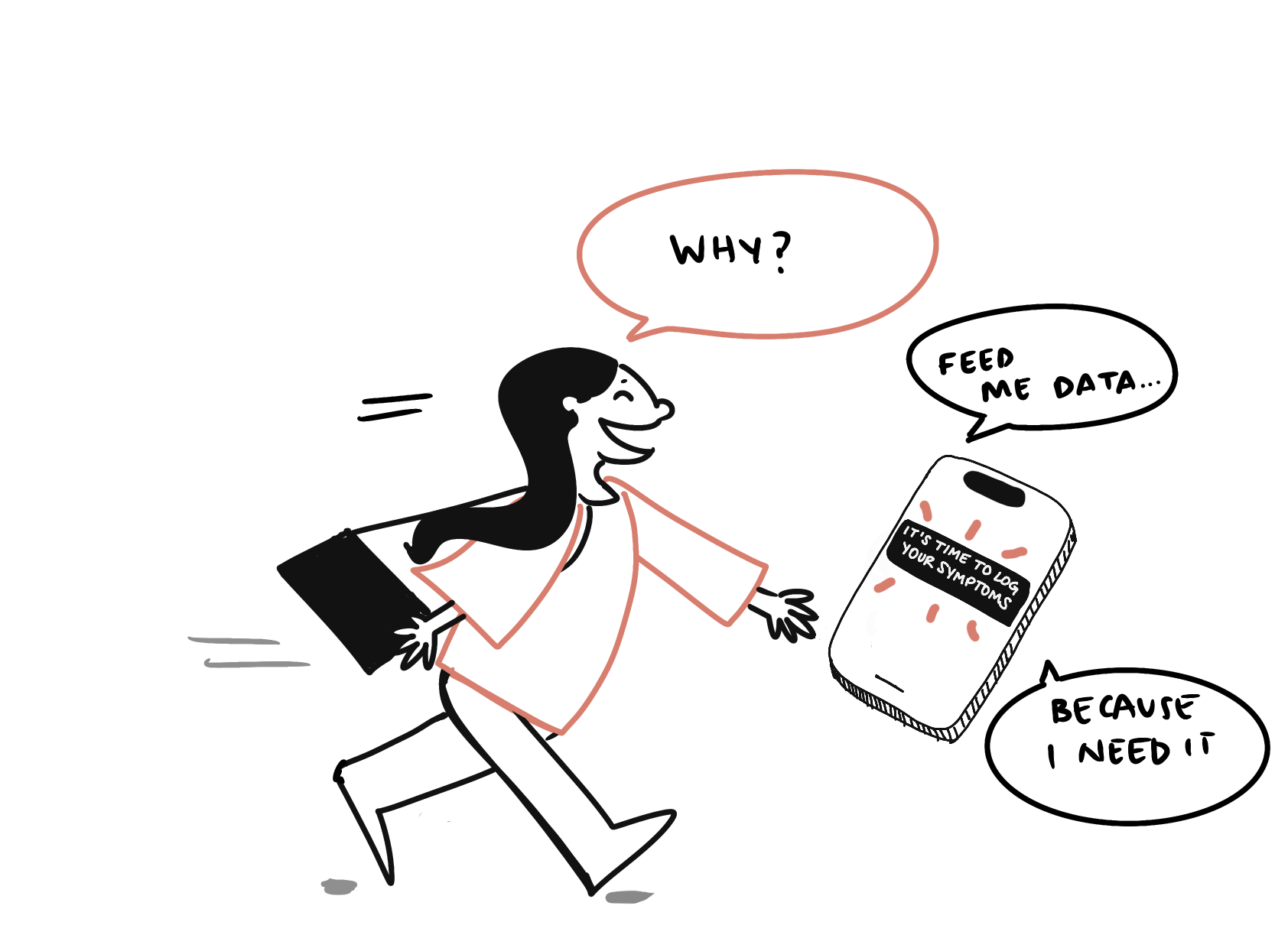
Unclear Functionality
These apps adopt the cycle trackers’ frameworks, which are primarily designed for users trying to conceive or avoid pregnancy. The goals of tracking perimenopausal symptoms are different.
Redundant Features
These apps try to replicate popular digital spaces like online communities and content hubs, but end up creating a redundant and time-wasting user experience.
I conducted an interview with six participants matching our target user: Women, between ages of 37-55, tech savvy, living in urban areas, time poor.
Balance offers symptom tracking, resources, community, and access to medical experts online or in person.
Caria offers symptom tracking, resources, and community support.
Clue offers cycle and symptom tracking.
To better understand the market I evaluated three companies targeted at women going through peri-and menopause.
Competitive Analysis

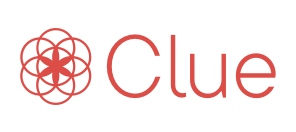
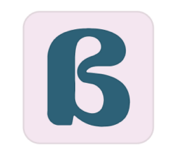
Problem
Statement
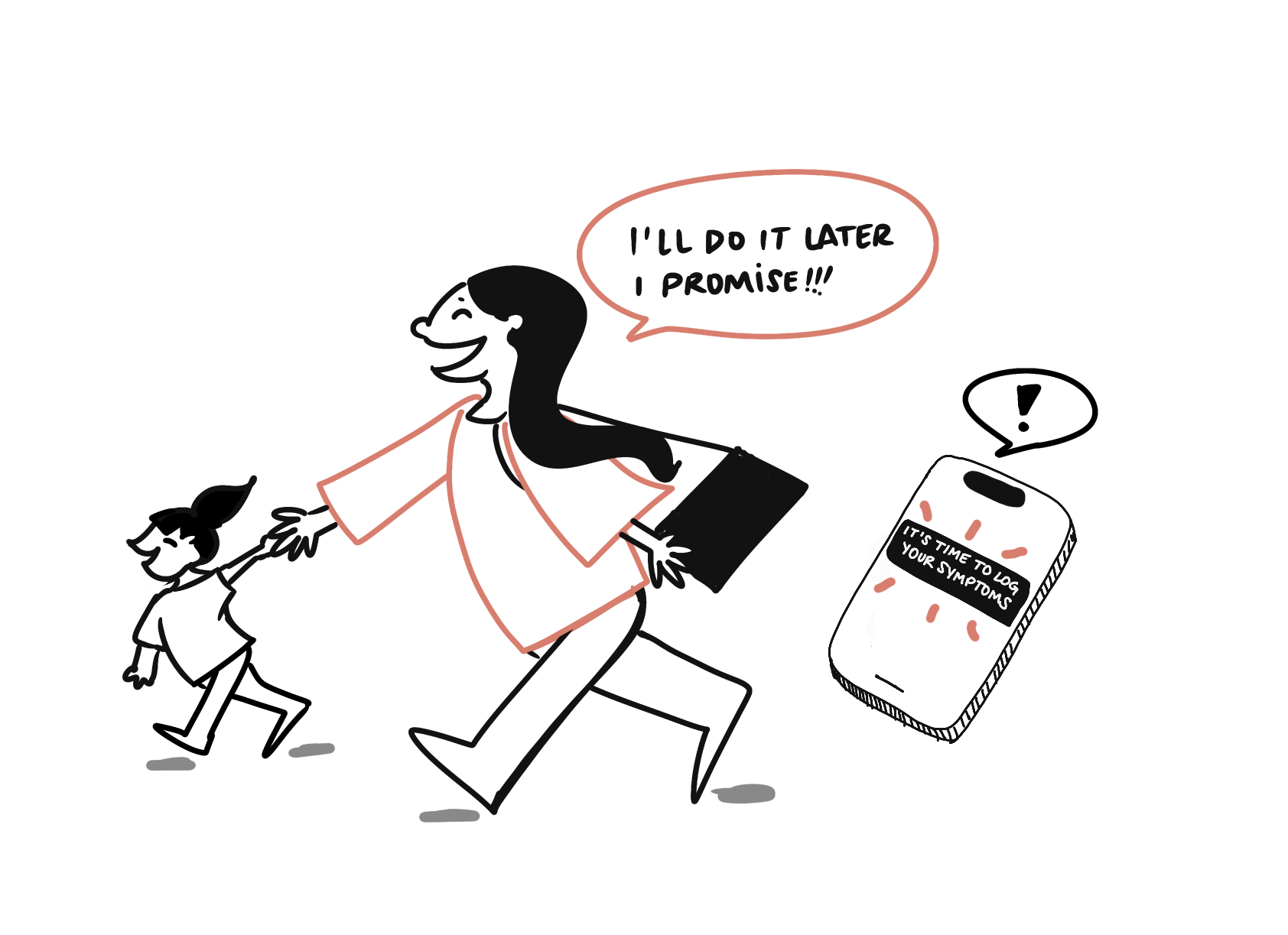
Busy women going through perimenopause need an easy way to track their symptoms and receive actionable, personalized, health insights because existing solutions are time-consuming, overly reliant on manual data entry, and fail to integrate data into concrete actions leaving users feeling frustrated and unsupported.
We will know we’ve addressed this problem successfully when the product captures 0.03% of the market within the first two years, with strong user retention and 50% of new customers acquired organically through word of mouth.
Core Features
Personalized AI Coach
Passive Health Data Tracking
Hands-Free Interactions

Voice Activated Functions
Users can log their symptoms, medications or find a tip just by saying “Hey Girlfriend” and start a comversation
Sync Wearables
Users can sync their wearables for passive data tracking.
Integrated Insights
And receive relevant insights based on your own data.
Hey Girlfriend, log brain fog today

Hey, does hormone replacement therapy help with brain fog?

Your basal body temperature suggests frequent nighttime hot flashes disrupting your sleep. You’ve also missed periods for three months, which could make you a good candidate for hormone therapy. Want me to recommend local specialists?

Your health metrics
Today’s Insights
Tips
Chat
Insights
Profile
Log
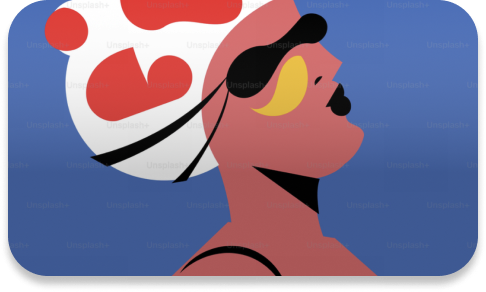
Your Skin
Glow that lasts
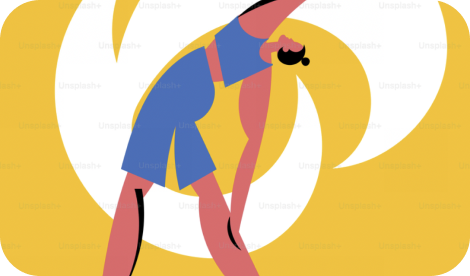

Transitions & You
Coping with changes
Sleep Health
Activity
BBT fluctuations




Tips for you
Good Morning Gorgeous!

Tips
Chat
Insights
Profile
Log

This is Your Dashboard
Tips for you
Insights for You
Sync your calendar to be on top of your symptoms and prepared for each day.
As you add data, your insights will appear here
Your week ahead



Sunday
24

Monday
18

Tuesday
19

Wednesday
20

Thursday
21

Friday
22

Saturday
23

Monday
18

Tuesday
19

Wednesday
20

Thursday
21

Friday
22

Saturday
23

As I learn about you, I will synthesize your information into actionable tips to help you manage your symptoms


Sync your wearables to see your sleep, heart rate, and body temperature
Your health metrics
Sync your wearables to see your sleep, heart rate, and body temperature
Sleep Health
Activity
BBT fluctuations



Features
Final Prototype
